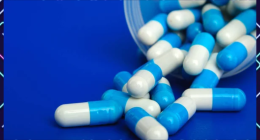Psoriasis Treatment Improved – Psoriasis is a prevalent, chronic, inflammatory skin condition that affects people, healthcare institutions, and society. Despite advancements in therapy, the processes behind less predominant types remain a mystery. Severe side effects and illness recurrence after therapy discontinuation are concerning. Understanding psoriasis pathophysiology is critical for new research findings, therapeutic approaches, and extended clinical treatment choices.
About the review
In the present review, researchers elucidated the biological mechanisms underlying psoriasis development and described current treatment options and those undergoing clinical trials. The review also discussed the potential role of genetic indicators and biomarkers in early diagnosis and intervention.
Biological Pathways and Signaling Mechanisms in Psoriasis
Psoriasis is characterized by an influx of immune cells, including T helper 1 (Th1), Th17, and Th22 cells. These cells secrete interleukin-22 (IL-22), which binds to IL-22 receptors on target cells, activating downstream signaling pathways in keratinocytes. This results in the production of antimicrobial proteins, inhibition of keratinocyte differentiation, and acanthosis, a hallmark of psoriasis. Tumor necrosis factor-alpha (TNF-α) may further enhance the effects of IL-22.
The tumor necrosis factor-interleukin 23-interleukin 17 axis plays a central role in psoriasis pathophysiology, particularly in plaque psoriasis. Dendritic cells (DCs) are the primary producers of interleukin 12 and interleukin 23, with ribonucleic acid (RNA) expression of p19 and p40 significantly increased in psoriasis lesions. IL-23 acts on T lymphocytes, particularly helper T [cluster of differentiation 4+ (CD4+)] cells, through a cell-surface receptor complex composed of transmembrane proteins IL-12R1 and IL-23R. IL-23 stimulates the production of interleukin-17, a key cytokine implicated in psoriasis pathophysiology. IL-17A, C, and F are elevated in psoriasis lesions and contribute to the disease.
TNF-α exerts its effects on target cells primarily through two types of TNF receptors: TNFRI (p55) and TNF-RII (p75). It significantly reduces plasmacytoid dendritic cell (pDC) IFN-α secretion, promoting pDC maturation into a more conventional dendritic cell phenotype capable of producing IL-23. TNF-α also interacts with IL-17A to co-regulate psoriasis-related cytokines and keratinocyte genes, influencing keratinocyte function.
C-C Motif Chemokine Ligand 20 (CCL20), also known as macrophage inflammatory protein 3α (MIP-3α), is a critical chemokine in psoriasis; however, it specifically binds to the C-C chemokine receptor 6 (CCR6). Scratching or trypsinization can induce CCL20 synthesis by keratinocytes in psoriatic lesions and release CCR6+ Th17 cells, which generate IL-17A and further promote CCL20 expression.
Metabolic alterations, particularly those involving the regulation of keratinocytes and associated immune cells, have been implicated in psoriasis pathogenesis. Targeting metabolic pathways may hold promise for psoriasis management.
Targeted Therapies for Psoriasis
The primary goals of psoriasis treatment are to reduce inflammation, clear skin lesions, improve quality of life, and prevent complications. Treatment strategies aim to eliminate lesions, reduce itching, and enhance the patient’s quality of life.
Current Treatment Options
For mild psoriasis, topical corticosteroids, calcipotriol, and their combination are often effective. In moderate-severe psoriasis cases unresponsive to topical treatments, oral medications such as retinoids, cyclosporine, and methotrexate are used. Methotrexate has been approved by the Food and Drug Administration (FDA) for over 50 years. Cyclosporine is reserved for severe psoriasis, but it is associated with various adverse effects, including renal toxicity. Acitretin is used to manage pustular and erythrodermic psoriasis; however, it is contraindicated for pregnant individuals due to its teratogenicity.
Phototherapy
Phototherapy, including psoralen and ultraviolet-A (PUVA), narrow-band UVB (NB-UVB), and wide-band UVB, is an essential therapeutic option for moderate to severe psoriatic lesions.
Biologics
Biologics, which target specific signaling molecules or pathways, have revolutionized psoriasis treatment, offering significant improvements in disease outcomes. Examples of biologics used to treat psoriasis include TNF-α inhibitors, IL-17 inhibitors, IL-12/IL-23p40 inhibitors, IL-23 inhibitors, IL-36/IL-1 inhibitors, Janus kinase (JAK) inhibitors, Phosphodiesterase 4 (PDE4) inhibitors, IL-22 inhibitors, and IFN inhibitors.
Study Source
Continue to check our website soundhealthandlastingwealth.com for more articles of this kind. And, please use our comment section as well, we would love to hear from you.









